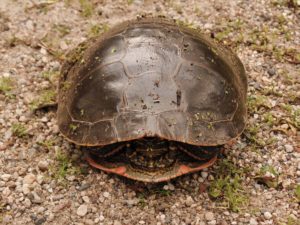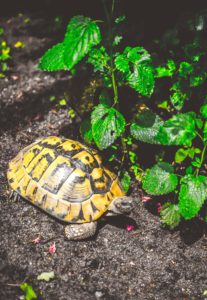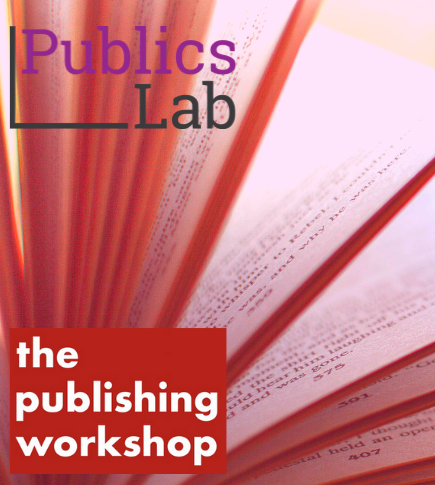
As members of the animal kingdom go, turtles are not fast or nimble. They can’t outrun or out-think a threat––indeed, they don’t even try. What they have instead of speed or agility or cleverness is a very hard shell, and when they feel threatened, they pull their head and legs inside and become a lump on the ground.
In the last few months, I’ve found myself using turtle as a verb to describe what many people––and not a few organizations––do in situations of precarity and scarcity. They tuck themselves in, make themselves small and unremarkable, and hope that this lack of distinction will serve as an armor against economic, political, and cultural forces beyond their control.
The impulse to turtle tends to arise whenever the possibility of change appears on the horizon. Change feels threatening in conditions of precarity. It puts people on the defensive. The academic humanities have been precarious for a very long time, and so many faculty members have become accustomed to thinking defensively.
One symptom of this is the advice I see and hear dispensed to graduate students about to go on the academic job market. Faculty members often guide graduate students to become the least objectionable version of themselves, as though if grad students only pull all of the soft, vulnerable parts of themselves that might become a target for a hiring committee’s judgment into their shells, then they will be safe––safer, at least. But there are two fundamental problems with this.
The first problem is that not everyone can make themselves equally “unobjectionable” to a faceless, anonymous academic hiring committee. There are a host of racist and sexist assumptions that underlay ostensibly objective standards of professionalism. Students are expected to conform around things like dress code (including visible tattoos, queer legibility, hair politics, and gender performance), research topic (interdisciplinary enough to be sexy but still able to get you an academic job and eventually tenure in a discipline), dissertation form (digital? public? ye gads, collaborative?), public work and political engagement (nothing so controversial that an institution might find it threatening), and even their personal lives (be willing to move anywhere, and don’t be visibly pregnant).
For students of color, gender nonconforming and queer students, and (still, under some circumstances) women, these expectations can feel akin to being forced to excise and deny important parts of themselves. My students at The Graduate Center have reminded me many times that this excision and denial have a damaging and violent effect on individual students, and a homogenizing effect on the academy as a whole.
So that is the first, most significant problem with turtling as a strategy. The second problem is that at best about 40% of PhDs in the humanities find full time, stable academic employment. What happens to the 60% or more for whom turtling does not work? Are they doomed to be left an uninspiring (and uninspired) lump on the ground, with no way forward and no alternative strategies?
Under conditions of precarity, the ostensibly safest choice is not always either possible or, indeed, desirable. There simply is no way to guarantee our students’ success on the academic job market as it currently is. But instead of allowing this to force us all into a scarcity mindset, we can instead allow it to free us from the dictatorial control of the academic job market. I know an increasing number of PhD students who are doing this for themselves, with or without faculty support––students who are saying no to sacrificing fundamental parts of themselves and who are deliberately making personal and professional decisions that are right for them.

Those students understand that turtling does not guarantee an academic job and that it comes at significant personal cost. Many of them intend to go on the academic job market, but they are also preparing themselves for other types of positions, both inside and outside of higher education. They do work that matters to them––exciting work that is often public-facing. They are also, in my experience, more grounded and less anxious than students who focus single-mindedly on the academic job market.
There is risk involved in making any kind of change, and some people feel this risk more acutely than others. But at this point, there is also a great deal of risk––even, I would argue, greater risk––in doing things the way they’ve always been done and hoping it works out. It’s time and past time to acknowledge that while turtling might work for turtles, for humans it is a genuinely terrible strategy.
Turtles are not agile, adaptable, fast, or clever. But humans are, and we should embrace those qualities in ourselves. If we recognize that our students will go on to do any number of things, we can approach graduate education with a mindset of abundance. This will allow us all to be more engaged, more versatile, and maybe even more joyful scholars and educators.
 Stacy Hartman is the director of the PublicsLab at The Graduate Center, City University of New York. At the PublicsLab, she manages the Mellon Humanities Public Fellowship program, which trains early career graduate students in the humanities in the methods and practice of public scholarship. The first interdisciplinary cohort of 12 public fellows begins in September 2019. In addition to the fellowship program, Dr. Hartman is responsible for developing the PublicsLab internship program, managing a robust slate of events related to public scholarship, and serving as the managing editor of the program’s website. Before coming to The Graduate Center in 2018, she was the project manager of Connected Academics at the Modern Language Association. She is currently co-editing a volume titled Mission Driven: Reimagining Graduate Education for a Thriving Humanities Ecosystem. She holds a PhD in German Studies from Stanford University.
Stacy Hartman is the director of the PublicsLab at The Graduate Center, City University of New York. At the PublicsLab, she manages the Mellon Humanities Public Fellowship program, which trains early career graduate students in the humanities in the methods and practice of public scholarship. The first interdisciplinary cohort of 12 public fellows begins in September 2019. In addition to the fellowship program, Dr. Hartman is responsible for developing the PublicsLab internship program, managing a robust slate of events related to public scholarship, and serving as the managing editor of the program’s website. Before coming to The Graduate Center in 2018, she was the project manager of Connected Academics at the Modern Language Association. She is currently co-editing a volume titled Mission Driven: Reimagining Graduate Education for a Thriving Humanities Ecosystem. She holds a PhD in German Studies from Stanford University.







